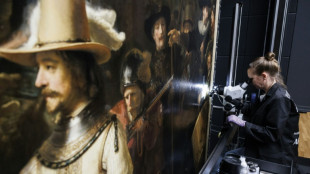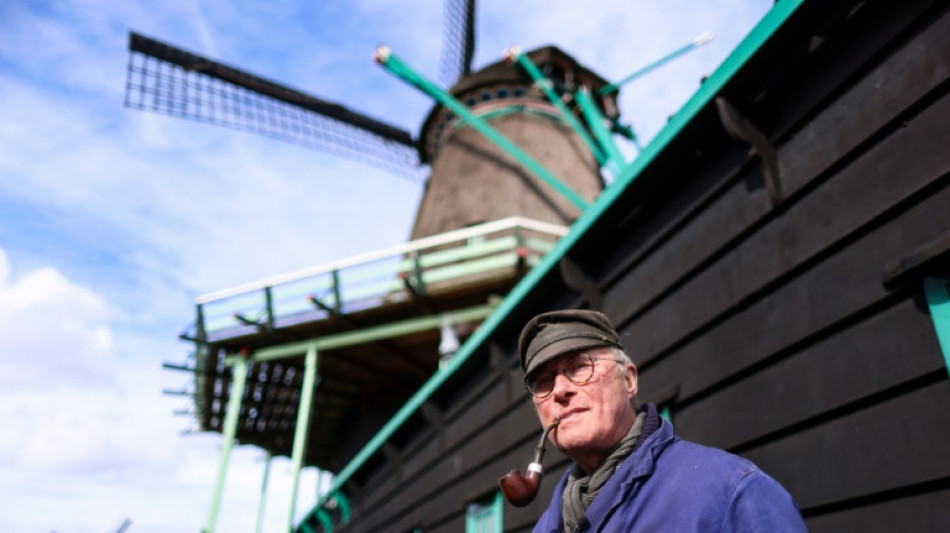
-
 N. Korea's latest weapon? Bombarding South with noise
N. Korea's latest weapon? Bombarding South with noise
-
'Kidnapped' Uganda opposition figure Besigye to appear at military court: lawyer

-
 Asian markets fluctuate as traders weigh geopolitical tensions
Asian markets fluctuate as traders weigh geopolitical tensions
-
'An inauspicious day': the landmines ruining Myanmar lives

-
 UN to vote again on Gaza ceasefire, US plans unclear
UN to vote again on Gaza ceasefire, US plans unclear
-
Japan's manga powerhouse 'Dragon Ball' turns 40
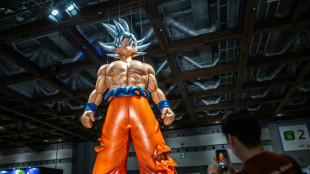
-
 Japanese, Koreans bottom of global love life survey
Japanese, Koreans bottom of global love life survey
-
Son blames 'mistakes' after South Korea held by Palestine in qualifier

-
 Japan ramps up tech ambitions with $65 bn for AI, chips
Japan ramps up tech ambitions with $65 bn for AI, chips
-
Lights, action, melodrama! Silent films get new reel at London haven

-
 Myanmar led world in landmine victims in 2023: monitor
Myanmar led world in landmine victims in 2023: monitor
-
ICC to sentence Timbuktu war criminal

-
 Ugandan opposition figure Besigye 'kidnapped', says wife
Ugandan opposition figure Besigye 'kidnapped', says wife
-
Australia's Jason Day eyes more major glory after resurgence

-
 Machu Picchu security boosted after visitors spread human ashes
Machu Picchu security boosted after visitors spread human ashes
-
Popovic hails Australia character in 'crazy' World Cup qualifier

-
 Taliban govt clearing 'un-Islamic' books from Afghanistan shelves
Taliban govt clearing 'un-Islamic' books from Afghanistan shelves
-
Argentina beat Peru as Uruguay hold Brazil

-
 Asian markets struggle as traders weigh geopolitical tensions
Asian markets struggle as traders weigh geopolitical tensions
-
Tatum stars as Celtics end Cavaliers unbeaten start

-
 Hurting India under pressure in blockbuster five-Test Australia series
Hurting India under pressure in blockbuster five-Test Australia series
-
'They killed her dream': Israel strike leaves woman footballer in coma

-
 Iraq holds its first census in nearly 40 years
Iraq holds its first census in nearly 40 years
-
Iraqis face tough homecoming a decade after IS rampage

-
 Russian net tightens around last civilians left in eastern Ukraine
Russian net tightens around last civilians left in eastern Ukraine
-
Olympic champion Tebogo aims to inspire next generation of African athletes

-
 Valencia on target as ten-man Ecuador upset Colombia
Valencia on target as ten-man Ecuador upset Colombia
-
'Rust' to premiere three years after on-set shooting

-
 Strike at French cognac maker Hennessy over measures in China spat
Strike at French cognac maker Hennessy over measures in China spat
-
Xi, Lula meet in Brasilia to 'enhance ties'

-
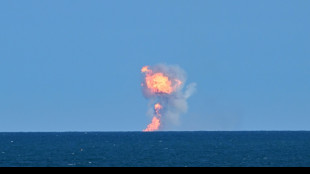 SpaceX fails to repeat Starship booster catch, as Trump watches on
SpaceX fails to repeat Starship booster catch, as Trump watches on
-
'I have left a legacy': Nadal retires from tennis

-
 US recognizes Venezuela opposition's Gonzalez Urrutia as 'president-elect'
US recognizes Venezuela opposition's Gonzalez Urrutia as 'president-elect'
-
European powers, US seek to censure Iran at UN nuclear watchdog board

-
 UNAIDS chief says husband, Ugandan opposition figure Besigye, 'kidnapped'
UNAIDS chief says husband, Ugandan opposition figure Besigye, 'kidnapped'
-
Nadal's sensational career ends as Netherlands defeat Spain in Davis Cup

-
 US announces talks with Israel over civilian casualties in Gaza
US announces talks with Israel over civilian casualties in Gaza
-
SpaceX fails to repeat Starship booster catch, as Trump looks on
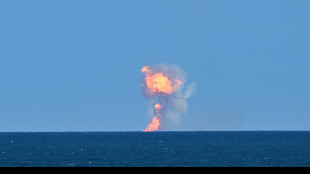
-
 G20 summit ends with Ukraine blame game
G20 summit ends with Ukraine blame game
-
Trump appoints TV celebrity 'Dr. Oz' to key US health post

-
 European stocks fall on Ukraine-Russia fears, US focused on earnings
European stocks fall on Ukraine-Russia fears, US focused on earnings
-
Last-gasp Szoboszlai penalty rescues Hungary draw with Germany

-
 Germany, Netherlands draw as Nations League group stage ends
Germany, Netherlands draw as Nations League group stage ends
-
Hong Kong tycoon Jimmy Lai takes witness stand in collusion trial

-
 Guardiola set to extend stay as Man City boss - reports
Guardiola set to extend stay as Man City boss - reports
-
Minnows Botswana hold Egypt to qualify with Mozambique, Tanzania

-
 Inter Miami coach Martino leaving club for 'personal reasons' - club source
Inter Miami coach Martino leaving club for 'personal reasons' - club source
-
Chinese man sentenced to 20 months for Falun Gong harassment in US

-
 Hong Kong court jails 45 democracy campaigners, drawing condemnation
Hong Kong court jails 45 democracy campaigners, drawing condemnation
-
'I did it for Rafa': Alcaraz after keeping Spain Davis Cup dream alive


Dutch windmill offers last link to paint made in Vermeer's day
Every morning for the last 42 years, Piet Kempenaar has cast a careful eye over the Dutch sky before releasing a brake and "steering" the giant blades of his centuries-old mill into the wind.
To match the force, he adjusts the sails of De Kat (The Cat), the world's last remaining mill using wind power to crush rocks into fine dust and make paint pigment -- just as it was done almost 400 years ago.
Driven by a system of wooden gears, ropes and pulleys, two massive grinding stones together weighing 10 tonnes churn and crush rocks for hours on end, until they become colourful pigments with enticing names like lapis lazuli, terre verte, umber and burnt sienna.
Now retired and leaving most of the paint-making business to his son Robert, Kempenaar still cuts the quintessential figure of a seasoned Dutch "colourman" in a cap, blue workman's jacket streaked with pigment dust, and a pipe angled in the corner of his mouth.
Behind him, De Kat, standing on the spot where rocks were first ground into pigment around 1646, creaks and groans as the four giant blades power the grinding stones in a never-ending circle.
The original mill burnt down in 1782 before being rebuilt. De Kat has been reconstructed and repurposed over the centuries for a variety of roles including a chalk storage space at one stage, before resuming its rock-crushing duties in 1960.
Kempenaar has leased De Kat from the local milling association since 1981 for his pigment-making business, which attracts thousands of buyers every year.
"I am not interested in painting, but I am obsessed with pigments," the 73-year-old Kempenaar told AFP at the famous mill in the picturesque but tourist-heavy Zaanse Schans north of Amsterdam.
- 'King of the blue' -
In his rugged hands, Kempenaar holds a block of a famous blue pigment favoured by a Dutch master.
"Here we have the king of the blue. It's a half-diamond from Chile or Afghanistan. You're talking about lapis lazuli, used by Johannes Vermeer," he said.
"Vermeer had the money -- he could pay for it. Back then, this was literally worth its weight in gold".
Dozens of pigments made at De Kat are neatly stacked on shelves -- terre verte or "green earth" from Verona, dark umber from Cyprus and carmine red, made from grinding up female cochineal insects, from the Canary Islands.
"We grind pigment the old way here. That's why people from all over the world come to buy from us. It's unique," Kempenaar said.
"And it hasn't changed in almost 400 years."
Art experts say many of the pigments used by Dutch masters like Vermeer and Rembrandt almost certainly came from "dye mills" dotted around the Dutch landscape at the time.
This includes the precious lapis lazuli which produced the ultramarine blue paint for the apron of Vermeer's famous work The Milkmaid.
Today, De Kat is the last link to the original way of paint-making before the process was industrialised around 1850, experts say.
- 'Step back in time' -
At Amsterdam's Rijksmuseum, some 20 kilometres (12.5 miles) to the south of the Zaanse Schans, art lecturer Peter Pelkmans has been preparing a paste of lapis lazuli and linseed oil to make ultramarine blue paint.
At the museum's Teekenschool (Drawing School) workshop, amateurs and artists alike can learn how to prepare paint the traditional way using De Kat's pigment.
"We give people a chance to take a step back in time," Pelkmans told AFP before mixing another colour, this time a burnt sienna, much loved by Rembrandt.
Rembrandt was known to grind most of his own pigment in a giant iron mortar in his studio and used a cheaper alternative called "smalt" as a substitute for the precious and more expensive lapis lazuli.
Vermeer's ultramarine blue pigment was however made from lapis lazuli, almost certainly ground in a windmill, Pelkmans said.
He explained just how precious the prized colour was.
"Often the blue was left as the last part of a commissioned painting. The artist would only add it once he had been paid in full," Pelkmans laughed.
M.King--AT

